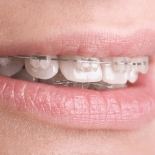
New Study Uses T-Scan Technology to Reveal Orthodontia’s Impact on the Bite
Dental Occlusion of Post-Orthodontic and Non-Orthodontic Subjects Studied
A study recently released by four clinical researchers from Thammasat University in Thailand explores how orthodontic treatment impacts dental occlusion. The study required the use of T-Scan™ technology, dentistry's only digital occlusal analysis system, for the purpose of measuring the occlusal force parameters in subjects who had a naturally developed dentition versus post-orthodontic treatment.
Sarah Qadeer BDS, MSD, Lili Yang DDS, PhD, Letrit Sarinnaphakorn DDS, MSc Dent, PhD, and Robert B. Kerstein DMD tested the theory that orthodontic treatment causes a change in occlusal relationships, thus leading to occlusal or bite discrepancies. A comparison was done with two groups of 25 Thai subjects: one group that had no orthodontic work and natural dentitions, while the other had post-orthodontic dentitions. T-Scan was used to record bite data of all subjects in order to see specific occlusal data points: the initial contact when the teeth occlude, the percentage of force in the anterior and posterior quadrants, and individual tooth force percentages.
"The results of this research provides scientific validation for the severity of the orthodontically created occlusal force imbalance," said Dr. Sarah Qadeer. "T-Scan digital occlusal analysis is of paramount importance to gain objective, visual, diagnostic data for post-orthodontic case finishing and improved treatment outcomes."

The resulting data from the study indicated that T-Scan showed both groups having initial tooth contacts on the second molars and second incisors, but the exact location varied between groups. The most significant difference between the groups was the balance of forces in certain quadrants of the dentition. In the group with natural dentitions, about 22% of forces were anterior and 78% posterior. In the group with post-orthodontic subjects, about 11% of forces were anterior and 90% posterior.
T-Scan is a tool that helps dentists identify occlusal interferences that could be potentially destructive. The handpiece is comprised of a sensor the patient bites on, and the data is recorded and displayed through the T-Scan software. The software displays the data points related to occlusal force, location, and timing.
The full study, Comparison of closure occlusal force parameters in post-orthodontic and non-orthodontic subjects using T-Scan III occlusal analysis, can be found online.